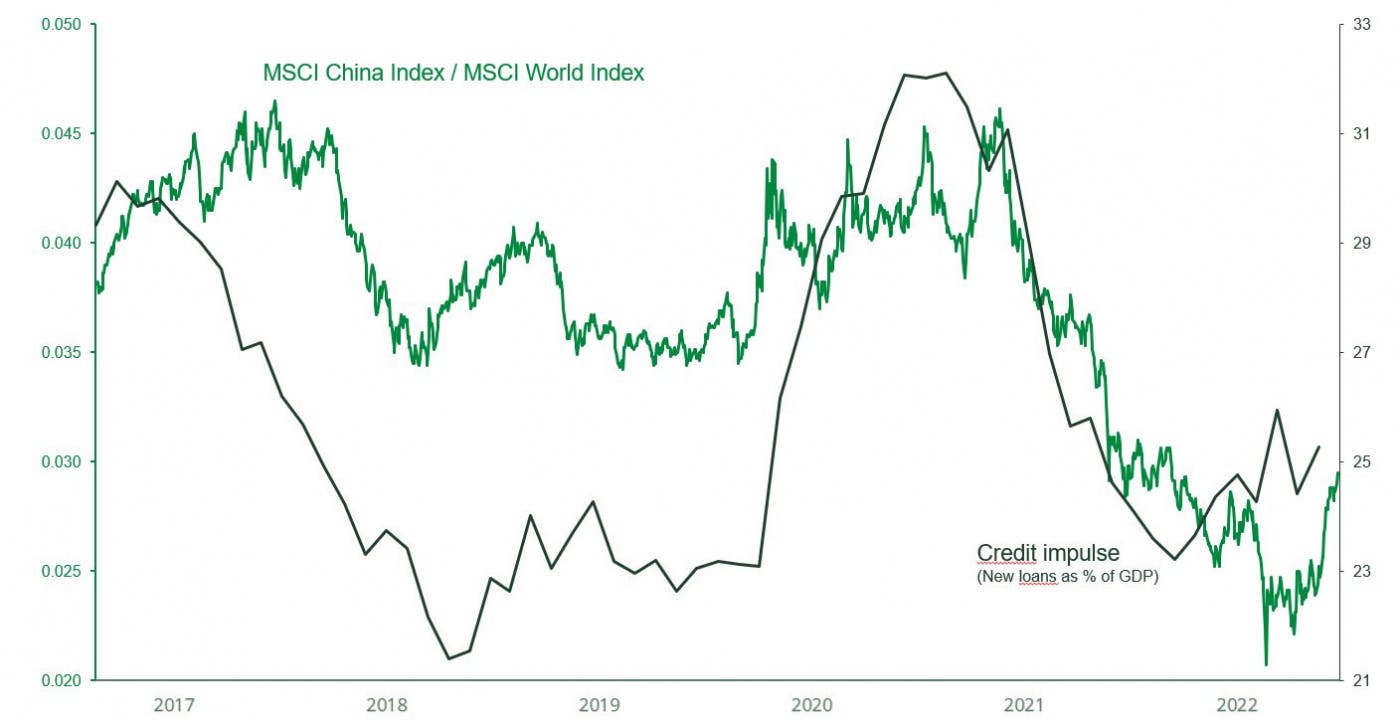Carmignac's Note

China bucks the trend
Beijing now seems determined to ease policies on several fronts – whether in terms of public health, regulations, or fiscal or monetary policy – in an effort to reboot China’s economy. Does this mean we’ll see a prolonged rebound in Chinese stocks?

Chinese policymakers have changed their tone recently in an attempt to bolster the country’s slowing output. This comes in stark contrast to the moves being taken in other major economic blocs and to the strict approach Beijing itself had taken until recently – an approach that had been weighing heavily on Chinese equities for over a year.
In the past few days, the central government has underscored its recommendation to lift the overly aggressive Covid restrictions and preventive measures that some areas introduced. And it has loosened its regulatory stranglehold , easing the pressure on certain businesses.
On the monetary policy front, the People’s Bank of China lowered the reserve requirement ratio for banks again this spring; it also cut its benchmark lending rate for the second time this year and reduced its medium-term lending facility rate. The goal is to spur investments (by getting banks to grant more loans) and support housing demand (the real estate sector accounts for 25% of China’s GDP) – and therefore stimulate the economy. This comes as a welcome counterweight to the policy tightening being carried out by central banks in the developed world amid a slowdown in those regions.
A pick-up in credit impulse could therefore be a key driver of the economic recovery in China. In the second half of the year, we should also start seeing the benefits of other measures intended to stoke domestic demand , such as a fresh round of infrastructure spending (through increases in the issuance of local government bonds), a reduction in corporate taxes, and financial assistance for poorer households.
All these factors could, finally, revitalise Chinese stocks.